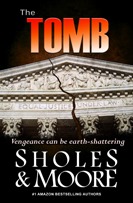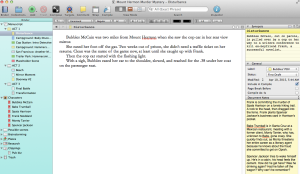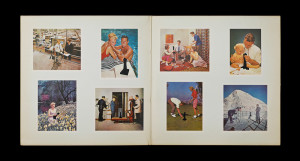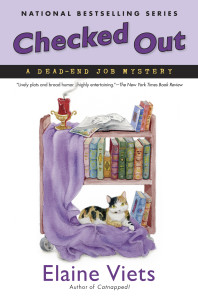 The word lust in our language is usually limited to the sexual arena. But it was not always so. The Greek philosophers used the term epithumia to indicate an intense desire which can be directed toward good or ill. Whatever the end, the desire is more than intellectual curiosity. It’s a feeling of I really must have this!
The word lust in our language is usually limited to the sexual arena. But it was not always so. The Greek philosophers used the term epithumia to indicate an intense desire which can be directed toward good or ill. Whatever the end, the desire is more than intellectual curiosity. It’s a feeling of I really must have this!
Which is precisely the feeling you want to induce in browsers who come across your book. It’s not enough to make the novel look “interesting.” You’ve got to raise epithumia so the blood starts pumping a “buy” message to the head.
In addition to a quality, eye-pleasing cover, there are at least three essential factors for raising desire levels in potential customers. They are excitement, killer copy, and grabber sample.
- Excitement
If you are not jazzed about your own book as you write it, it’s going to be that much more difficult to excite a reader. The first order of business, then, is to make sure you are pumped about your own project.
Because writing a book is like a marriage. Your first idea, getting charged up about it, is like falling in love. Once you commit to the writing of a book, you’ve married it, and we all know marriage has its ups and downs. You’re not always going to be starry-eyed and ready to sing “In Your Eyes” at the drop of the hat.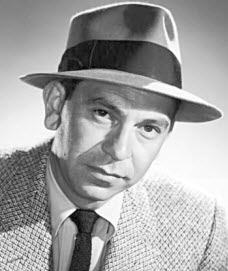
(By the way, we need to bring back the daily wearing of hats.)
So you work things out, recapture that magic feeling, because you’re dedicated to the marriage.
Editing, of course, is marriage counseling.
Try not to write any scene until something about it excites you. I brainstorm for the unexpected––in action, dialogue, setting, or new characters. One of those will set off a spark in me, and I know I’m ready to write. I want to sustain that feeling throughout the book. There’s an alchemy there connects reader an author.
- Killer Copy
Your book description is the next lust inducer. It’s like that perfect outfit that accentuates the positives. It’s Betty Grable’s legs.
 What would be the male analogue? This guy?
What would be the male analogue? This guy?
Book description copy (sometimes called “cover copy,” sometimes a “blurb,” though I usually reserve that term for someone’s endorsement) are those few lines that sum up the book in a way that increases the desire to buy. It is crucially important. There are people who have marketing degrees that specialize in this kind of writing.
But you can learn to do it. My formula is three sentences and a tagline.
Three Sentences
Sentence #1 – Character name, vocation, initial situation
Dorothy Gale is a farm girl who dreams of getting out of Kansas to a land far, far away, where she and her dog will be safe from the town busybody Miss Gulch.
Sentence #2 – “When” + Doorway of No Return
Note: The Doorway of No Return is my term for the initial turning point that thrusts the Lead into Act II. I describe it in detail in Super Structure.
When a twister hits the farm, Dorothy is carried away to a land of strange creatures and a wicked witch who wants to kill her.
Sentence #3 – “Now” + The Death Stakes
Note: Death can be physical, professional, or psychological
Now, with the help of three unlikely friends, Dorothy must find a way to destroy the wicked witch so the great wizard will send her back home.
You may have heard the term “elevator pitch.” That’s what this is, a short plot outline you can spout on a short elevator ride. You can now expand or revise each sentence as you see fit. Just remember this is the “sizzle” and not the “steak.” Don’t try to pack everything about your plot into the copy. Just enough to whet the appetite of the busy browser.
Tagline
Sometimes wrongly called a “logline” (that’s a screenwriting term for how scripts are “logged” with a sentence describing the plot), the tagline is more of a teaser. It’s what you see on movie posters. Some famous taglines are:
In space, no one can hear you scream. – Alien
Don’t go in the water. – Jaws
Earth. It was fun while it lasted. – Armageddon
His story will touch you, even though he can’t. – Edward Scissorhands
Reality is a thing of the past. – The Matrix
Coming up with a great tagline is fun, but it takes some work. The best way to go at it is to write a bunch of them. Then choose the best ones and refine, rewrite, refine again. Get some help from friends. Brainstorm. Test them on a few people.
By the way, the two exercises above are a great thing to do before you ever write a word of your novel. Because if you can’t nail this much about your idea, and pack it with epithumia, it’s a pretty fair bet you need to shore up the foundation for the long building project ahead.
Here’s the tagline and copy I did for my thriller Don’t Leave Me:
When they came for him it was time to run. When they came for his brother it was time to fight.
Chuck Samson needs to heal. A former Navy chaplain who served with a Marine unit in Afghanistan, he’s come home to take care of his adult, autistic brother, Stan. But the trauma of Chuck’s capture and torture threatens to overtake him. Only the fifth graders he teaches give him reason to hope for the future.
But when an unseen enemy takes aim at Chuck, he finds himself running for his life. And from the cops, who think he’s a murderer. A secret buried deep in Chuck’s damaged soul may be the one thing that can save him. But can he unearth it?
Now, needing to protect his only brother from becoming collateral damage, Chuck Samson must face the dark fears embedded in his mind and find a way to save Stan . . . or die trying.
- Grabber Sample
The final touch in our lust generator is a great opening. That’s the free sample readers will see online, or on the first few pages when browsing in a bookstore (remember those days?).
I advise that any novel begin with a disturbance and an actual scene. In these days of short attention spans you simply must …
Squirrel!
Want to learn what a grabber opening is? Just click on the button that says “First-page Critiques” on our blog masthead and you’ll get a list of the critiques we’ve done over the years. I’m telling you, spend a week studying these and you’ll be a sample monster, a grabber virtuoso, a hook hotshot.
All right, friends, now it’s your turn. What makes you lust after a book? What is something that would turn off your desire?




